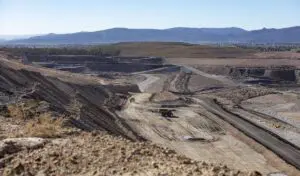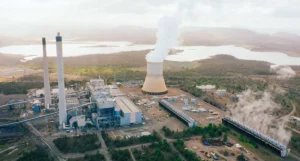A new report published this week reveals that new-build renewable energy is already cheaper than already operating coal plants across much of the planet, and outlines a pathway for feasibly and justly phasing out coal-fired generation.
The new report – How to Retire Early: Making Accelerated Coal Phase-Out Feasible and Just – was published on Tuesday by Rocky Mountain Institute, Carbon Tracker Initiative, and Sierra Club, and came to the conclusion that replacing the entire global fleet of coal plants with clean energy plus battery storage could be done at a net annual savings as early as 2022.
Moreover, instead of simply breaking even, by 2025 the net annual savings of such a transition could increase to $US105 billion ($A153 billion) – and all before even considering the secondary costs of coal, including health, climate, and environmental impacts, or accounting for the social and environmental benefits of reducing pollutants in the atmosphere.
“A faster transition from coal to clean energy is within our grasp, and we show how to engineer that transition in ways that will save money for electricity customers around the world while aiding a just transition for workers and communities,” said Paul Bodnar, Managing Director at Rocky Mountain Institute.
The new analysis reveals that new-build renewable energy is not only cheaper than new coal plants virtually everywhere across the planet, but that it is also already cheaper to build new renewable energy capacity including battery storage than to continue operating 39% of the world’s existing coal capacity.
The share of uncompetitive coal plants across the planet would then increase to 60% in 2022, and 73% in 2025.
By replacing uncompetitive coal with clean energy, electricity utilities around the world could save their customers around $US39 billion ($A57 billion) in 2020, annual savings which would increase to $US86 billion ($A125 billion) in 2022 and $US141 billion ($A205 billion) in 2025.
“Coal power is quickly facing economic obsolescence, independent of carbon pricing and air pollution policies. Closing coal capacity and replacing it with lower cost alternatives will not only save consumers and taxpayers money, but could also play a major role in the upcoming economic recovery,” said Matt Gray, Managing Director, Co-Head of Power and Utilities at the Carbon Tracker Initiative.
The increasing cost efficiency of new-build renewable energy is also highlighted by the declining need for subsidies as the transition takes hold. According to the report, phasing out and replacing the remaining “competitive” share of the global coal fleet would require $US155 billion ($A225 billion) in subsidies in 2020, but this figure drops rapidly to $80 billion ($A116 billion) in 2022 and only $36 billion ($A52 billion) in 2025.
How to Retire Early offers a three-part approach for governments and public finance institutions to accelerate the global coal phase-out and transition to renewable energy: 1) refinancing to fund the coal transition and save customers money on day one, 2) reinvesting in clean energy, and 3) providing transition financing for workers and communities.
Such an approach in 2020, for example, would save US customers up to $US10 billion annually by phasing out the 79% of the 236GW of the coal fleet which is already uncompetitive.
Outside of the United States, according to the report, a third of the global coal fleet is already more costly to continue operating than building new renewables with battery storage. This figure increases to nearly 80% by 2025, with some regions and countries seeing virtually no competitive coal.
In the European Union, for example, 81% of the coal fleet is already uncompetitive, and this will increase to 100% by 2025. In China, 43% of the coal fleet is uncompetitive, which will only increase to nearly 100% by 2025, while 17% of India’s coal fleet is currently uncompetitive, increasing to 85% in 2025.
“Tackling the climate crisis requires a swift transition off of coal and onto clean, renewable energy,” said Mary Anne Hitt, Sierra Club’s National Director of Campaigns. “This report shows just how much cheaper it is to invest in renewable energy, and why it makes less and less sense to keep running coal plants, even before climate change is taken into account. What’s more, this report shows how innovative financial tools can be used to retire coal plants while saving consumers money, cleaning the air and water, improving public health, and ensuring a just transition for workers and communities.”
“Given the long lead times for electricity system planning and decision-making as well as the size of the opportunity,” concluded Jules Kortenhorst, CEO of Rocky Mountain Institute, “now is the time to start structuring accelerated coal phase-out in all regions.”
RenewEconomy and its sister sites One Step Off The Grid and The Driven will continue to publish throughout the Covid-19 crisis, posting good news about technology and project development, and holding government, regulators and business to account. But as the conference market evaporates, and some advertisers pull in their budgets, readers can help by making a voluntary subscription here to help ensure we can continue to offer the service free of charge and to as wide an audience as possible. Thankyou for your support.








